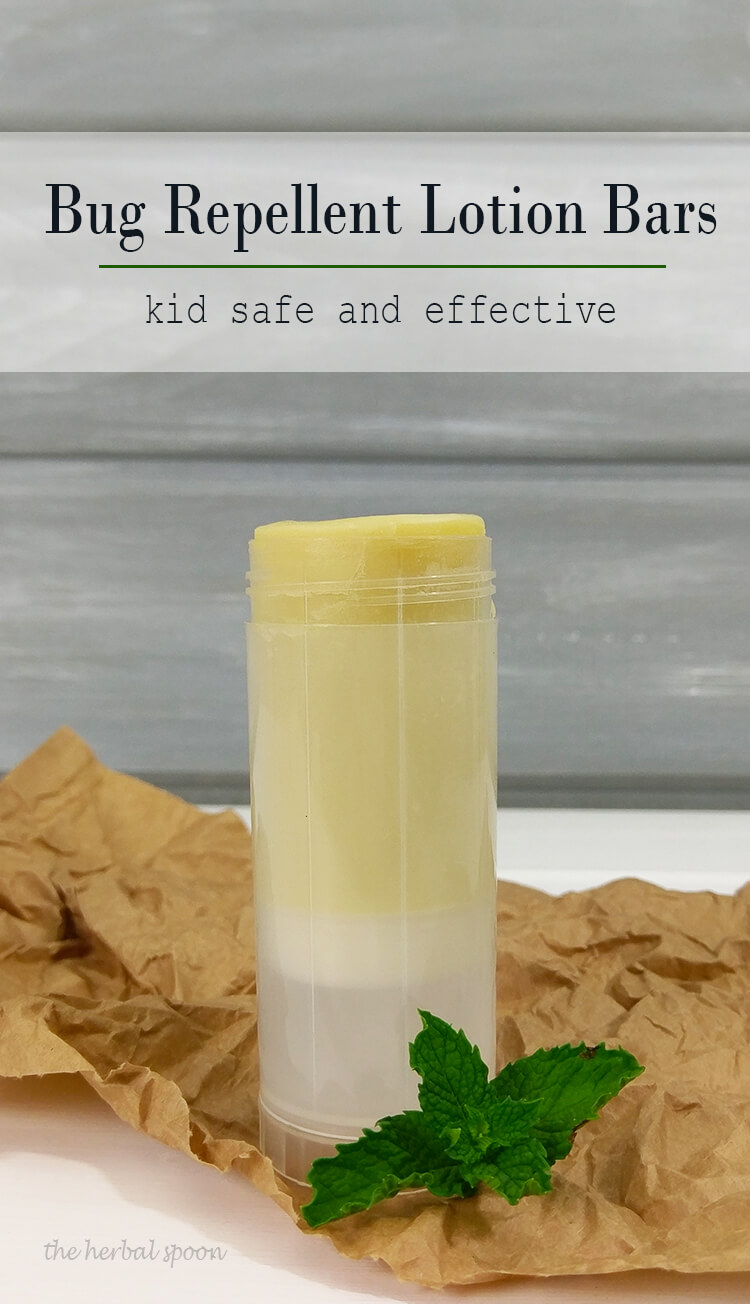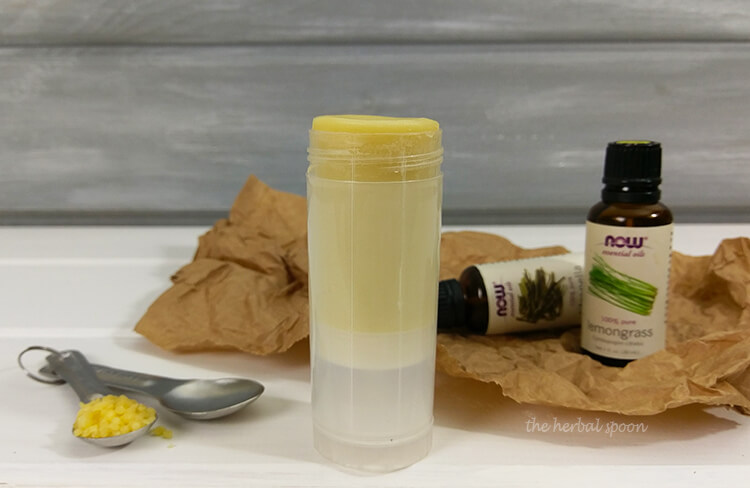 Mosquitos treat me like I’m their best friend. I used to douse myself in so much bug spray I was a walking cloud of DEET. Sometimes even that wasn’t enough to deter their friendship. I love my DIY bug repellent balm, but it has some ingredients that aren’t safe for children under 4. I wanted to create a homemade bug repellent lotion bar that was effective, portable, and undeniably little kid friendly.
Mosquitos treat me like I’m their best friend. I used to douse myself in so much bug spray I was a walking cloud of DEET. Sometimes even that wasn’t enough to deter their friendship. I love my DIY bug repellent balm, but it has some ingredients that aren’t safe for children under 4. I wanted to create a homemade bug repellent lotion bar that was effective, portable, and undeniably little kid friendly.
Bugs are more than annoying
Both of my parents have Lyme disease. Even their dog has Lyme disease. This bug-borne illness has become a national epidemic and we’re told the only way to avoid bites is to douse our skin in pesticides. DEET is common, but it’s also been linked with brain damage, insomnia and seizures.
DEET’s instructions warn not to breathe it, don’t let it touch skin, and don’t get it in the mouth. My toddler’s fingers are CONSTANTLY in his mouth. And when it’s hot in the summer I have more skin exposed. So, don’t breathe, don’t let it touch you, and wash it off before bed.
Let’s be real, who does that??
It’s a game of Russian roulette between the bugs and the bug spray. There are natural options, but how can we know they really work?
Pesticides ain’t what they used to be
The bad news is bugs have evolved to be less resistant to certain chemical pesticides. Researchers from the London School of Hygiene found mosquitos are only fooled by DEET once, then they ignore the repellent (source). The good news is scientists are researching natural pesticides to help remedy the problem. Consumer demand also helps drive research into essential oils as bug repellent.
Keep mosquitos away naturally
Some essential oils work better to repel bugs than others, while some only repel certain bugs. Our individual body chemistry also comes into play, so one blend may work beautifully for you, but not so much someone else. There is substantial research done on which essential oils are best to repel bugs, but there’s a few tricks to get them to work.
How do you make natural bug repellent?
Essential oils are volatile, meaning they evaporate quickly. Not so great when you want them to stick around and ward off blood sucking pests. A water based spray won’t dilute the oils, and they evaporate quickly. Goodbye bug protection. Essential oils in an oil-based product creates a longer lasting protective barrier on the skin.
Reapply and take cover
Natural bug repellent won’t protect as long as a synthetic pesticides. This isn’t a big deal either, as it can be re-applied every few hours. I’ve found wearing a light, long sleeve shirt and pants provides an additional safety net, without making me feel like I’m in a sauna. Mosquitos can still sting through fabric, so clothing has to be loose.
What essential oils repel bugs?
Some bug repellent essential oils aren’t safe for kids, and some are expensive or hard to find. For these homemade bug repellent lotion bars I’ve created a blend of essential oils research has shown to be effective, safe for all ages, affordable, and easy to find. If you prefer to buy a pre-made blend, Plant Therapy has this kid-safe one, and this one for older kids and adults.
This study looked at several different essential oils and found that amyris, citronella and catnip, were 100% effective at repelling mosquitos for a little over an hour. This blend which included lemongrass and cedar essential oil performed as well as high strength DEET at repelling mosquitos and nymph ticks.
I also use geranium essential oil in my bug repellent lotion bars for its ability to deter a wide variety of insects, including flies, mosquitos, and ticks.
Why these dilution ratios are so important
Lemongrass can irritate the skin if used above 1%, so I’ve kept it at .5%. This way the bug repellent lotion bar can be rubbed liberally over skin without issue. However, if using it on a very young child, omit this one.
Citronella is typically used between 5-10% to make an effective repellent, and there are no known contraindications. It seems like it’s a lot, but reducing the amount will also reduce how effective it is. I’ve opted for the lower end of the spectrum and used a 5% dilution.
Geranium is approved for little ones and is safe to use on an adult in concentrations as high as 17.5%. That’s a little overkill for this recipe though, so I’ve used it at a 1% concentration. You could add more if you prefer, but I already found the scent of this blend to be very strong.
Amyris is also kid safe and technically has no known maximum safety rate. I still wouldn’t make a habit to apply it undiluted though, as this can cause sensitization. I’ve used it at 5% here. Amyris has a deep, woodsy, base note to it and helps ground the blend.

Ingredients
- 3 and ½ Tbsp beeswax pastilles or grated pieces
- 3 and ½ Tbsp virgin coconut oil
- 1 Tbsp and 2 tsp liquid carrier oil - I prefer sweet almond or grapeseed oil
- 1 and ¼ tsp citronella essential oil (5% dilution)
- ¼ tsp geranium essential oil (1% dilution)
- 1 and ¼ tsp amyris essential oil (5% dilution)
- 13 drops lemongrass essential oil .5% dilution (omit if using for very young children)
- 1/3 tsp non-gmo vitamin E oil (or 1.5 ml)
Instructions
- In a heat safe glass bowl add the beeswax, coconut oil, and grapeseed oil. Fill the saucepan halfway with water and put it over medium heat on the stove. Perch the glass bowl on top of the saucepan to create a double-boiler effect.
- Allow the ingredients to melt together and stir to combine.
- Once everything is liquid, turn the heat off. Stir in the vitamin E and essential oils. This solidifies fast, so I keep it on the stove until I’m ready to pour.
- Quickly pour the liquid into your container or mold. Put it in the fridge for about 15 minutes, or until solid.
- To use: Apply to exposed skin. I rub a strip on each limb and the back of my neck. Reapply every few hours, or as needed.
- The scent is strong, so I apply it to the back of my neck instead of my face to avoid any headache.
Note on Vitamin E: Most vitamin E oil products are diluted in a carrier oil, like coconut or olive oil and won’t help preserve the product. The vitamin E linked to in the recipe is non-gmo and undiluted. While it’ not technically a preservative, vitamin E is an antioxidant that helps extend the shelf life of the carrier oils.
Choose the Perfect Storage Container
Lotion bars can be poured into a mold to make all sorts of gorgeous patterns. I use moulds like these, then store my lotion bars in re-usable metal tins.
My favorite way to store these homemade bug repellent lotion bars though is in a twist up tube, like this one. Since I’m using bug repellent in the summer when things like to melt, a tube keeps the lotion bar from getting messy.
How Do the Lotion Bars Feel?
These have a heavier feel and don’t soak into skin like a lightweight lotion. We want that protective barrier though to help the scent from the oils last longer. You could also use candelilla wax which isn’t as heavy as beeswax, but would still firm the bars up nicely. I didn’t have any candelilla wax on hand to test it but let me know if you try it!

Great recipe! Very effective! I made this before our camping trip – as we normally attract all the bugs! 🙂 We we’re very impressed. Knats didn’t swarm. Mosquitoes didn’t bite. Flys didn’t bother. Thank you.!!
Any substitute for amyris?
You could replace it with cedarwood.